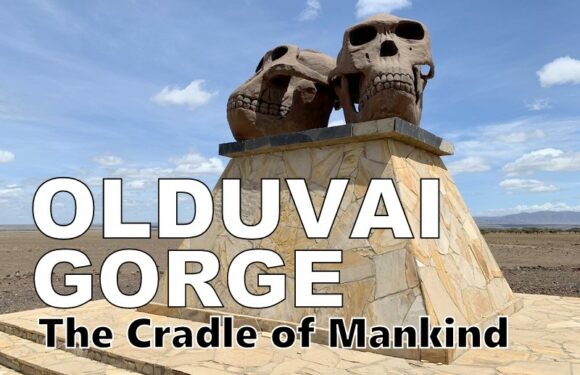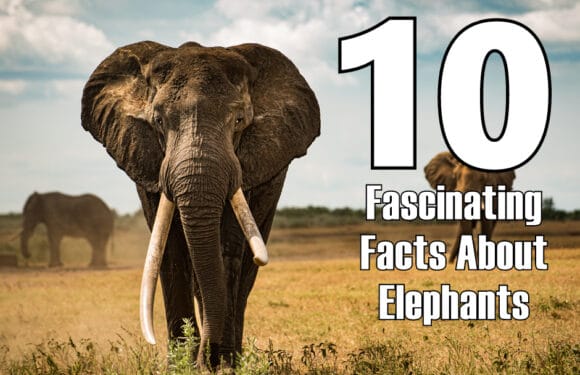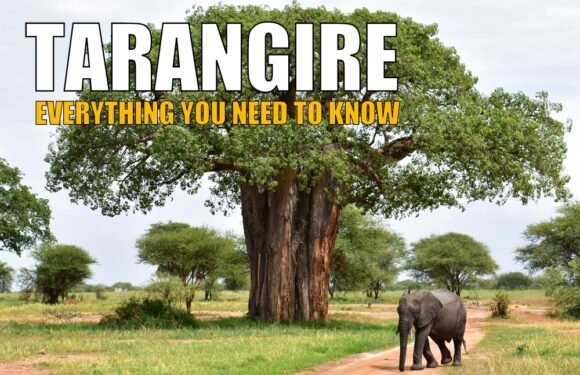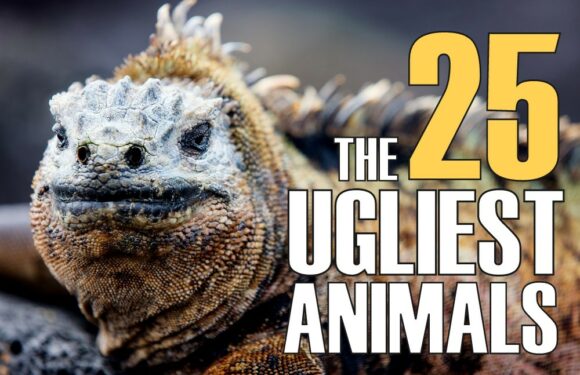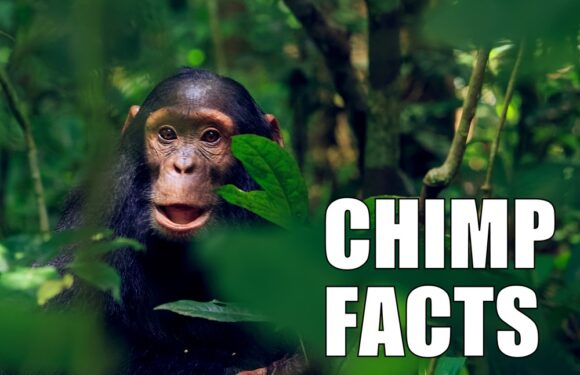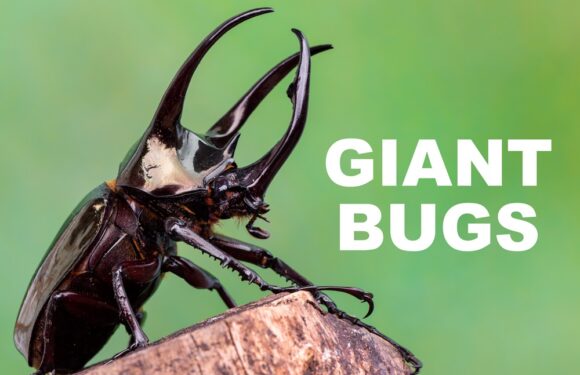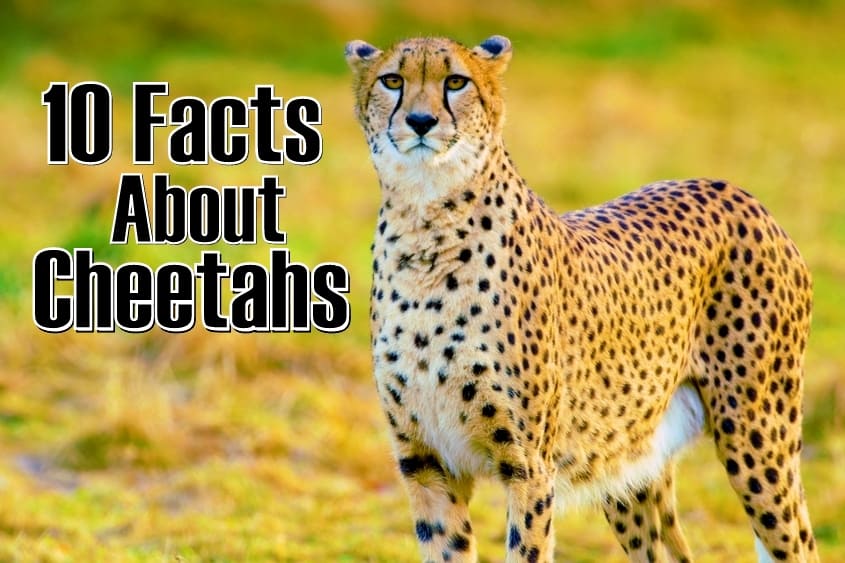
The cheetah is the fastest land animal on the planet, capable of running at high speeds of up to 75 mph (121 kph). It is a elegant and agile member of the big cat family, renowned for its quickness and distinct appearance. Cheetahs have a small, rounded head that sits on a long neck. They have a slender, streamlined body, covered by a golden-yellow coat and round black spots. The word “cheetah” comes from the Sanskrit word (“Chita”) -िचत, which means “spotted one”.
Let’s explore the top 10 uncommon facts about the fierce, fast, and sly cheetah.
1. The Cheetah Is the Oldest Cat on Earth
Cheetahs are the original household feline companion.
For thousands of years, cheetahs have made grand “house” pets. Historically, emperors, kings, and pharaohs kept them as a sign of wealth. Their history with humans can be dated as far back as 32000 BCE. Because cheetahs could not easily breed in captivity, individuals were taken from the wild.
Although they were never technically domesticated, the cheetah is comparable to today’s domestic cat in many ways.
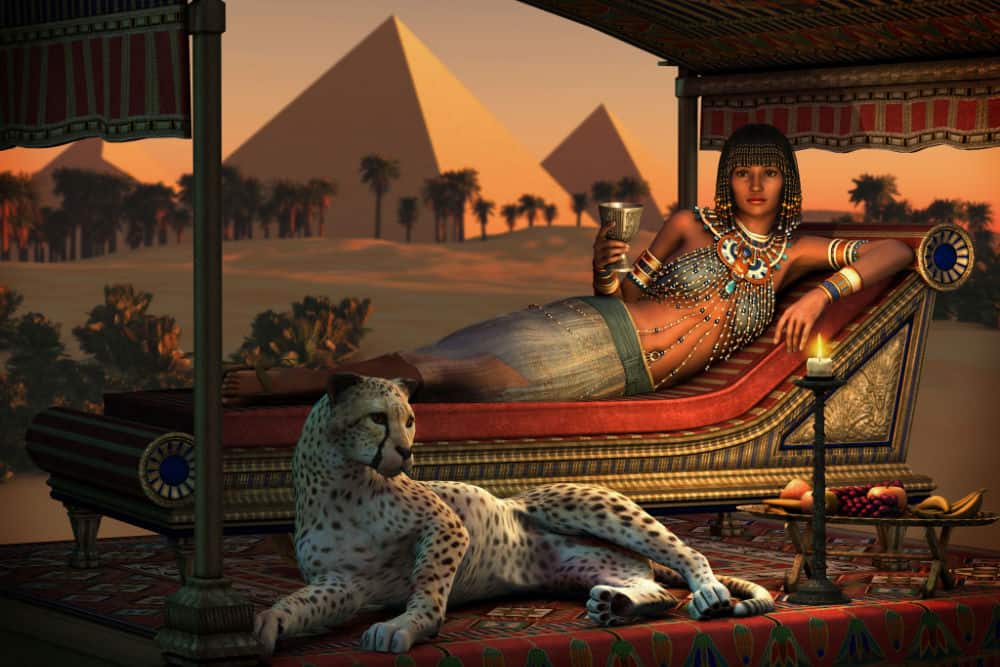
2. Cheetahs Can’t Fully Retract Their Claws
Acinonyx jubatus is the cheetah’s Latin or scientific name, given in 1776. Acinonyx means “no move claw” in Greek — a reference to its nonretractile claws. The cheetah is the only member of the cat family that doesn’t possess the capability to fully retract its claws.
Cheetahs evolved to have semi-retractable claws to give them a good grip on the ground while chasing fast-moving prey. Other felines and big cats retract their claws in order to sneak up on prey. For the cheetah who relies more on speed, its claws are adapted for fast running.
3. Cheetahs Have Markings That Help Them See
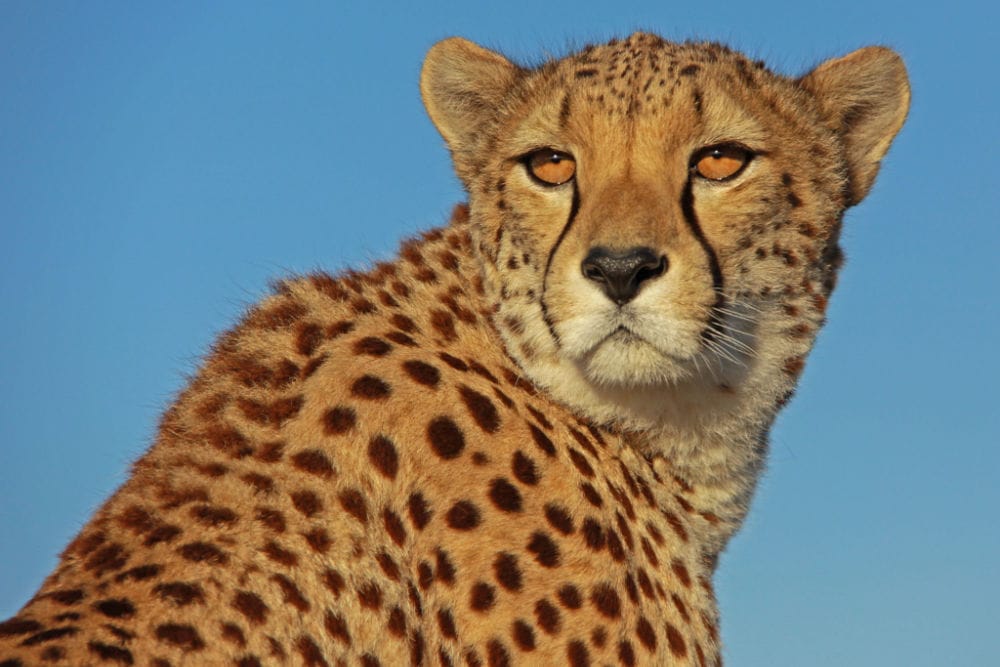
Do you have difficulty distinguishing a cheetah from a leopard?
The answer is staring you right in the face! Cheetahs have long, black lines that run down their face from their eyes to their mouth, called “malar stripes” or “malar marks. Malar marks are an adaptation for deflecting the brightest sunlight off the horizon or the wide-open savannas, allowing them to see better in the daylight. They help the cheetah focus on their prey when they are hunting.
Football players who put black streaks under their eyes are using the same strategy!
4. Cheetahs Like to Hunt at Dusk and Dawn
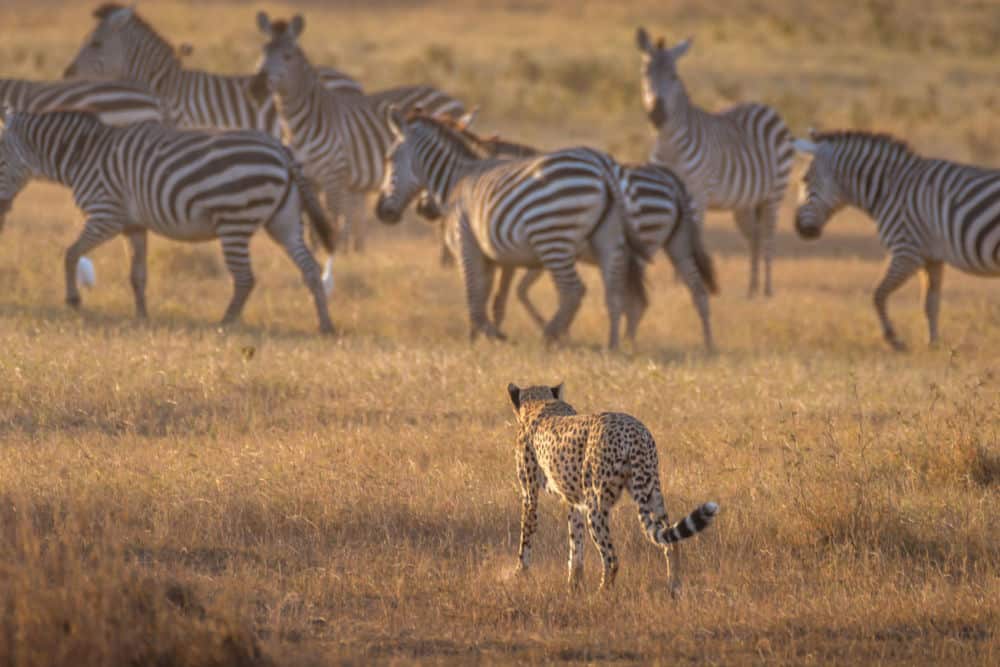
Cheetahs are considered crepuscular hunters, meaning they hunt at dawn and dusk.
Most often cheetahs can be found hunting between 6:00 and 10:00 in the morning and 4:00 and 6:00 in the evening. Cheetahs are active during the daytime mainly because when you hunt by sight and speed, you need to be able to see well to do it.
In some regions, cheetahs are active at night, especially during the extra light of a full moon. Some cheetahs have even become night specialists. So the hard-and-fast rules we humans try to place on them don’t always hold true.
5. A Cheetah’s Tail Acts as a Rudder
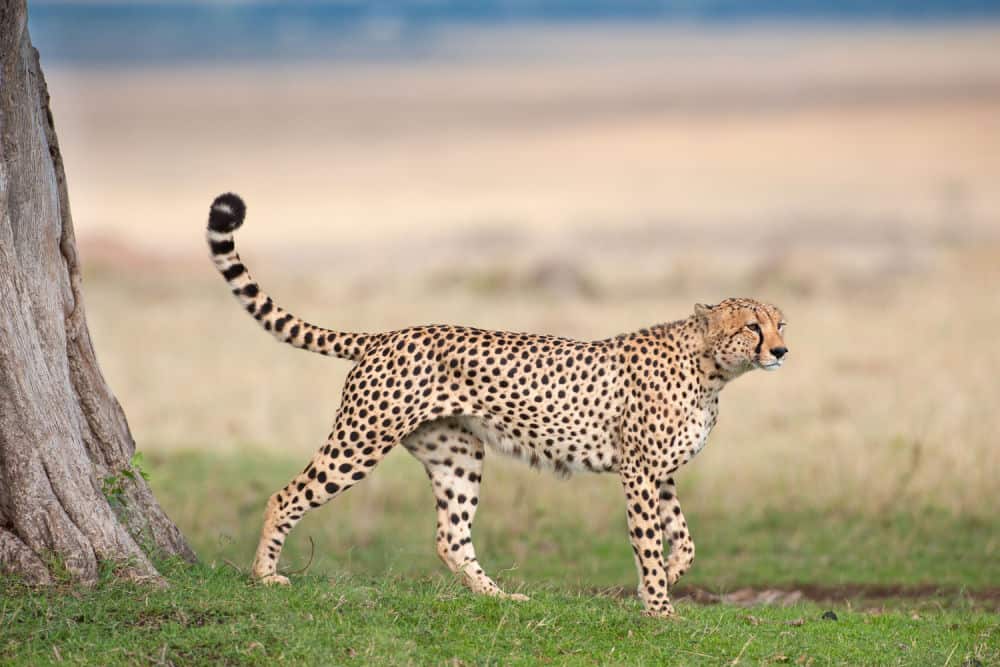
Prey has little chance of outrunning a cheetah in a straight line. Therefore, they change direction often, twisting, turning and jumping to make their getaway.
While most cats have round, fluffy tails like your house cat, the cheetah tail actually has a flat surface, like a rudder. It helps the cheetah to perform sharp turns at high speed. By swinging the tail from side to side, it acts as a counterbalance, allowing the cheetah to control its steering and keep its balance .
6. Cheetahs Don’t Roar, They Meow, Purr and Chirp
A cheetahs vocalization is lot more tranquil than other big cats. Instead of instilling fear with a ferocious roar, cheetahs meow and purr.
Lions, tigers, jaguars, and leopards have a ligament in its voice box that can be stretched, creating a larger sound-producing passage and thus a wider range of pitch. The more the ligament extends, the lower the sound generated when air passes across the vocal cords. In addition, the cords are large, unbroken and fleshy, which produces deeper sounds.
On the other hand, the house cat and the cheetah both have voice boxes that enable them to purr continuously, but it limits the range of other sounds they can make including the ability to roar.
Cheetahs also make a chirp (or a “stutter-bark”) which sounds like a bird call. Male cheetahs make this sound during mating season to encourage breeding.
7. Cheetahs Don’t Need to Drink Much Water
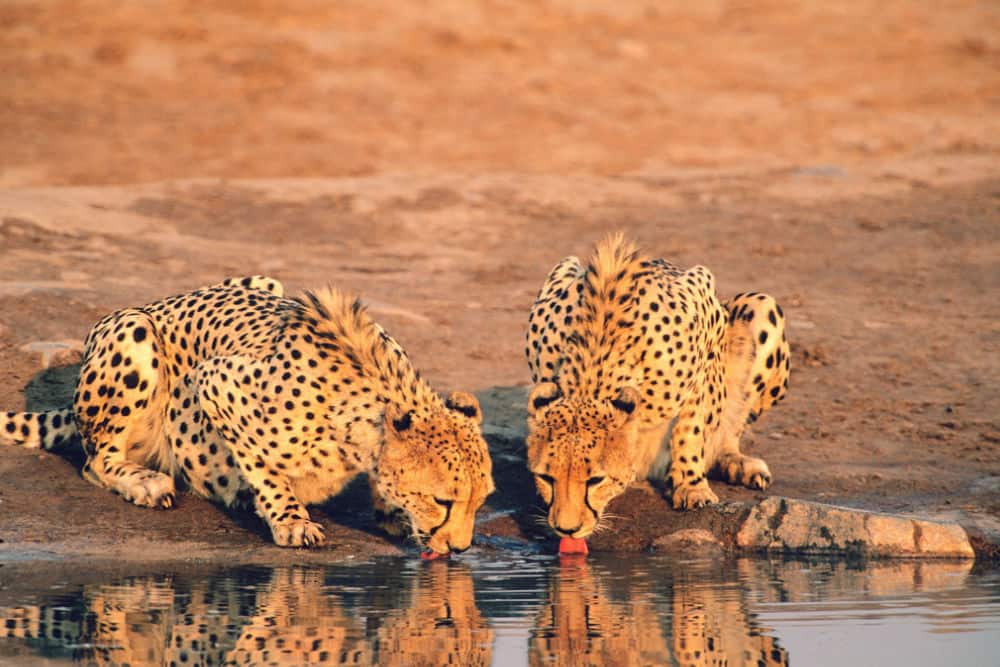
Having adapted to a dry environment, cheetahs can easily go four days without water and survive up to 10 days without it. This doesn’t mean that they don’t get any liquids at all. As it turns out, cheetahs will draw water from the animals they hunt, kill, and eat.
Speaking of water, cheetahs can swim, but they usually avoid getting in water. They may be forced to when crossing a river, but they seem to dislike it as much as most domestic cats.
8. There Are 5 Different Subspecies of Cheetah Worldwide
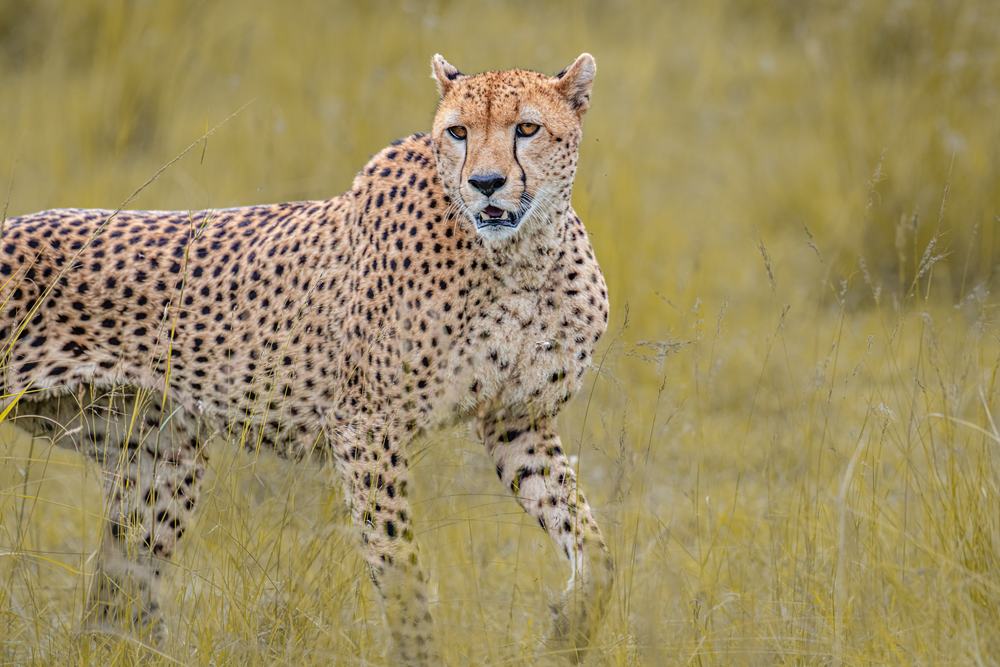
There are five subspecies of cheetah. They belong to the genus Acinonyx.
- East African (Tanzanian) cheetah
- Northwest African cheetah
- South African cheetah
- Asiatic cheetah (shown above)
- Sudan cheetah
The East African Cheetah (Acinonyx jubatus) can be found in the grasslands and savannas of Tanzania, Kenya, Uganda and Somalia. It is the largest cheetah subspecies, measuring between 2.5-3 feet tall at the shoulder.
9. The Cheetah Has an Exceptionally Flexible Spine
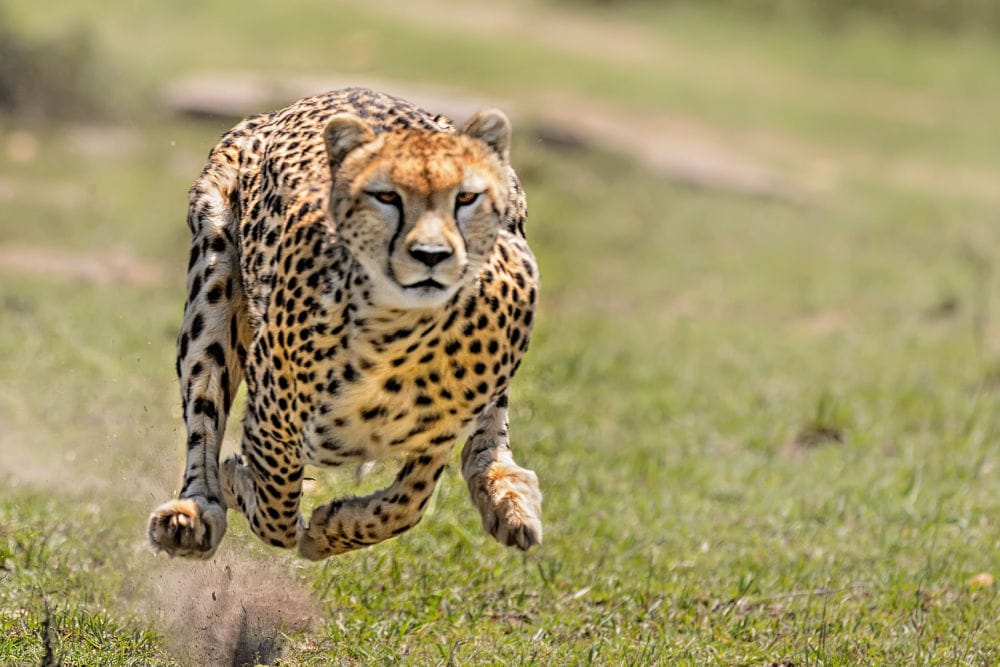
Another one of the adaptations the cheetah has for speed is its extremely flexible spine. Other cat’s spines do not have the same flexibility as that of the cheetah.
Each of its vertebra has great freedom of movement. Additionally, it has unique hips. These features allow its front and hind limbs to overlap while running, giving the cheetah more distance per stride. While it is sprinting, it actually spends more time in the air than on the ground!
10. The Cheetah is Africa’s Most Endangered Cat
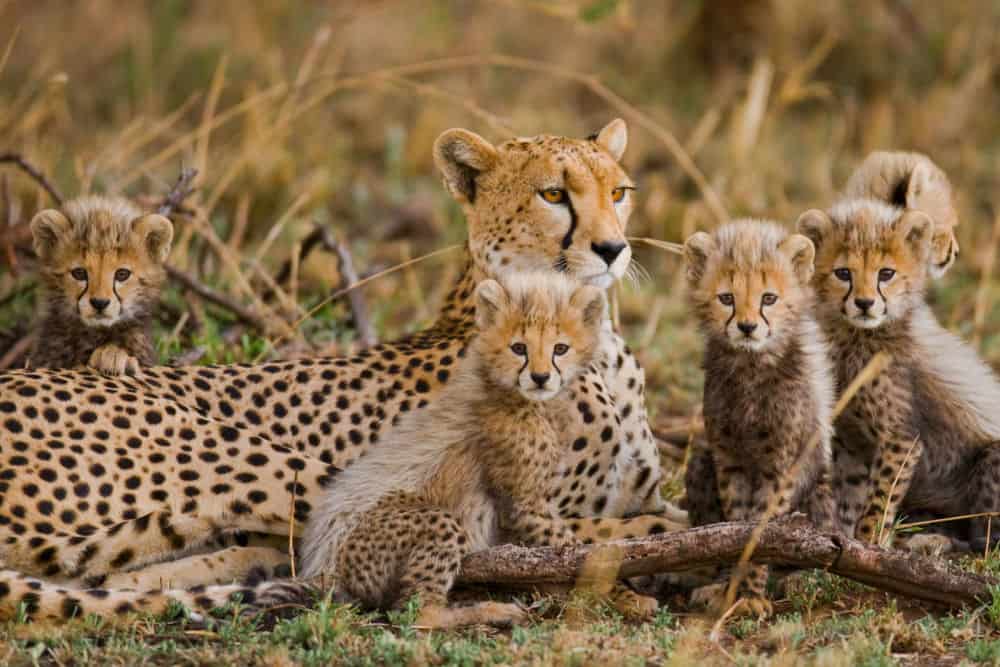
Cheetahs are racing towards extinction rapidly, Tanzania’s cheetah population is estimated to be around 1,180, representing just over 10% of the global population. They typically give birth to between three and five cubs per litter. However, the number can vary, with some litters consisting of up to eight cubs. Cheetah cubs are highly vulnerable in their early life stages, with a high mortality rate due to predation and other factors.
The Asiatic and Northwest African cheetahs are listed as critically endangered. Although the number of cheetahs in Sudan and Tanzania is higher, the population has declined in recent years.
If you want to witness these beasts in the wild, you’ll have an opportunity while on a safari in the Serengeti. The eastern Serengeti was once a conservation area for cheetah research, so there are several breeding females in the area.
Please support organizations like the Cheetah Conservation Fund through donations or volunteer work to help spread the word on this beautifully stunning, large cat species.
Cheetah Quick Facts
- Scientific Name: Acinonyx jubatus
- Common Name: Cheetah
- Size: Approximately 2.5-3 feet tall at the shoulder, body length of 3.5-4.5 feet with a 25-31 inch tail
- Weight: 75-150 pounds
- Lifespan: 10-12 years in the wild
- Diet: Carnivore, primarily hunting small to medium-sized prey like gazelles, impalas, and rabbits
- Habitat: Grasslands, savannas, and scrub forests of Sub-Saharan Africa; a small population also exists in Iran
- Conservation Status: Vulnerable
__________
Want to go on a Tanzanian safari? Visit the Ultimate Kilimanjaro safari page.






















































